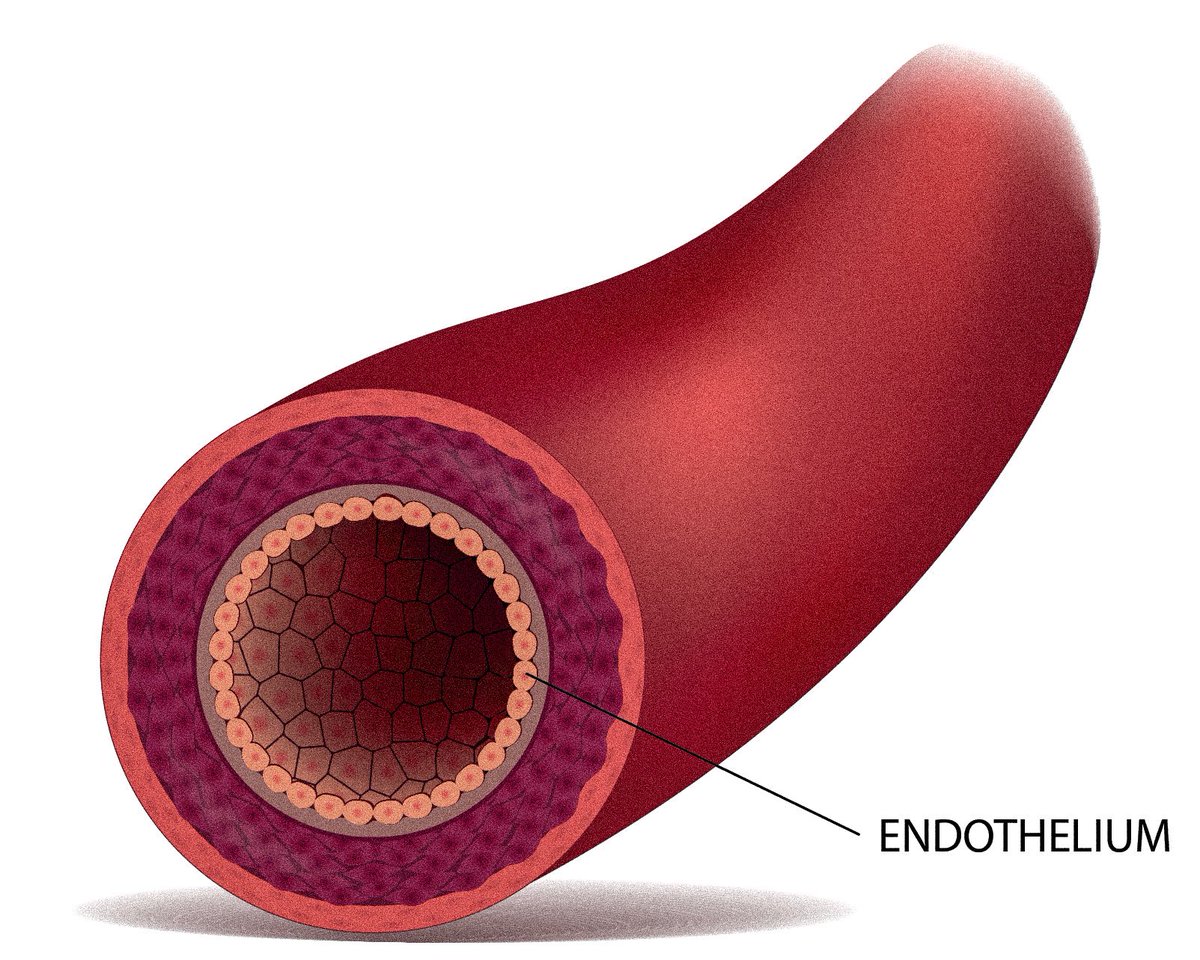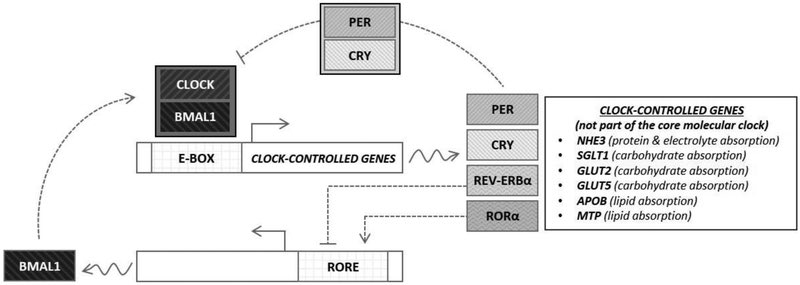The Endothelium: How to keep your heart strong and avoid a heart attack
(One person dies every 34 seconds in the U.S. from cardiovascular disease)
THREAD


(One person dies every 34 seconds in the U.S. from cardiovascular disease)
THREAD


A blood vessel is made of 3 layers:
1. Endothelium
2. Smooth muscle cells
3. Adventitia
This thread covers the first since it’s the most crucial part of blood vessel health
1. Endothelium
2. Smooth muscle cells
3. Adventitia
This thread covers the first since it’s the most crucial part of blood vessel health
What does your endothelium do?
The endothelial layer is thin, yet very active and responsible for:
• making hormones
• allowing passage for chemicals
• maintaining blood vessel function
• creating nitric oxide
• preventing blood clots
• relaxing the arteries
•… twitter.com/i/web/status/1…
The endothelial layer is thin, yet very active and responsible for:
• making hormones
• allowing passage for chemicals
• maintaining blood vessel function
• creating nitric oxide
• preventing blood clots
• relaxing the arteries
•… twitter.com/i/web/status/1…
What causes damage to it?
All the classic risk factors:
1. Smoking
2. Chronically elevated blood sugar
3. Obesity
4. High blood pressure
5. Oxidized LDL
6. Consumption of vegetable oil
7. Chronic sleep deprivation
8. Elevated homocystine levels
9. Elevated hs-CRP particles… twitter.com/i/web/status/1…
All the classic risk factors:
1. Smoking
2. Chronically elevated blood sugar
3. Obesity
4. High blood pressure
5. Oxidized LDL
6. Consumption of vegetable oil
7. Chronic sleep deprivation
8. Elevated homocystine levels
9. Elevated hs-CRP particles… twitter.com/i/web/status/1…
ENDOTHELIAL DYSFUNCTION
The root cause of any cardiovascular event is endothelial dysfunction
It takes decades to go from early stage damage to an advanced stage
That’s why your lifestyle is important
The root cause of any cardiovascular event is endothelial dysfunction
It takes decades to go from early stage damage to an advanced stage
That’s why your lifestyle is important
NITRIC OXIDE (NO)
I’ve covered this in the past
Nitric oxide is extremely important to maintain blood vessel function
NO acts upon the smooth muscle, creating a relaxation effect on the artery through vasodilation
Read more below
I’ve covered this in the past
Nitric oxide is extremely important to maintain blood vessel function
NO acts upon the smooth muscle, creating a relaxation effect on the artery through vasodilation
Read more below
https://twitter.com/zaidkdahhaj/status/1603802900999782401
PLATELET AGGREGATION
When the blood vessel is damaged from the above risk factors..
Platelets clump together and go to the sight of injury to repair damage
If that process remains chaotic over time, more inflammatory cells and cytokines add insult to injury
Guess what… twitter.com/i/web/status/1…
When the blood vessel is damaged from the above risk factors..
Platelets clump together and go to the sight of injury to repair damage
If that process remains chaotic over time, more inflammatory cells and cytokines add insult to injury
Guess what… twitter.com/i/web/status/1…
REDUCTION OF NITRIC OXIDE
All risk factors which cause damage to the endothelium reduce NO
This reduces vasodilation which increases pro-atherosclerotic activity
More specifically:
• Endothelin-1
• Thromboxane
We must raise NO by any means
All risk factors which cause damage to the endothelium reduce NO
This reduces vasodilation which increases pro-atherosclerotic activity
More specifically:
• Endothelin-1
• Thromboxane
We must raise NO by any means
Assessing endothelial function
This involves expert help, but it’s valuable for those who want to go deeper
Cue non-invasive assessments of vascular health
1. Flow-mediated dilatation (measures nitric oxide function)
2. Pulse wave analysis (reveals the stiffness of… twitter.com/i/web/status/1…
This involves expert help, but it’s valuable for those who want to go deeper
Cue non-invasive assessments of vascular health
1. Flow-mediated dilatation (measures nitric oxide function)
2. Pulse wave analysis (reveals the stiffness of… twitter.com/i/web/status/1…
MICRO-VESSELS
These take up a larger surface area than the large vessels
Most dysfunction is going to occur with them rather than the latter
One technique to asses function:
Laser doppler imaging
Useful to determine microvascular endothelium health
These take up a larger surface area than the large vessels
Most dysfunction is going to occur with them rather than the latter
One technique to asses function:
Laser doppler imaging
Useful to determine microvascular endothelium health
Regardless of technical details
You must build your foundation
• Sleep
• Hydration
• Nutrition
• Movement/Training
• Supplementation
I’ll help you do this and set you up with everything you need for LIFE
Let’s talk: zaidkdahhaj.com/coaching
You must build your foundation
• Sleep
• Hydration
• Nutrition
• Movement/Training
• Supplementation
I’ll help you do this and set you up with everything you need for LIFE
Let’s talk: zaidkdahhaj.com/coaching
If you like this tweet, you will love my exclusive emails for my subscribers.
Join here: zaidkdahhaj.substack.com/?utm_source=su…
Join here: zaidkdahhaj.substack.com/?utm_source=su…
• • •
Missing some Tweet in this thread? You can try to
force a refresh




















